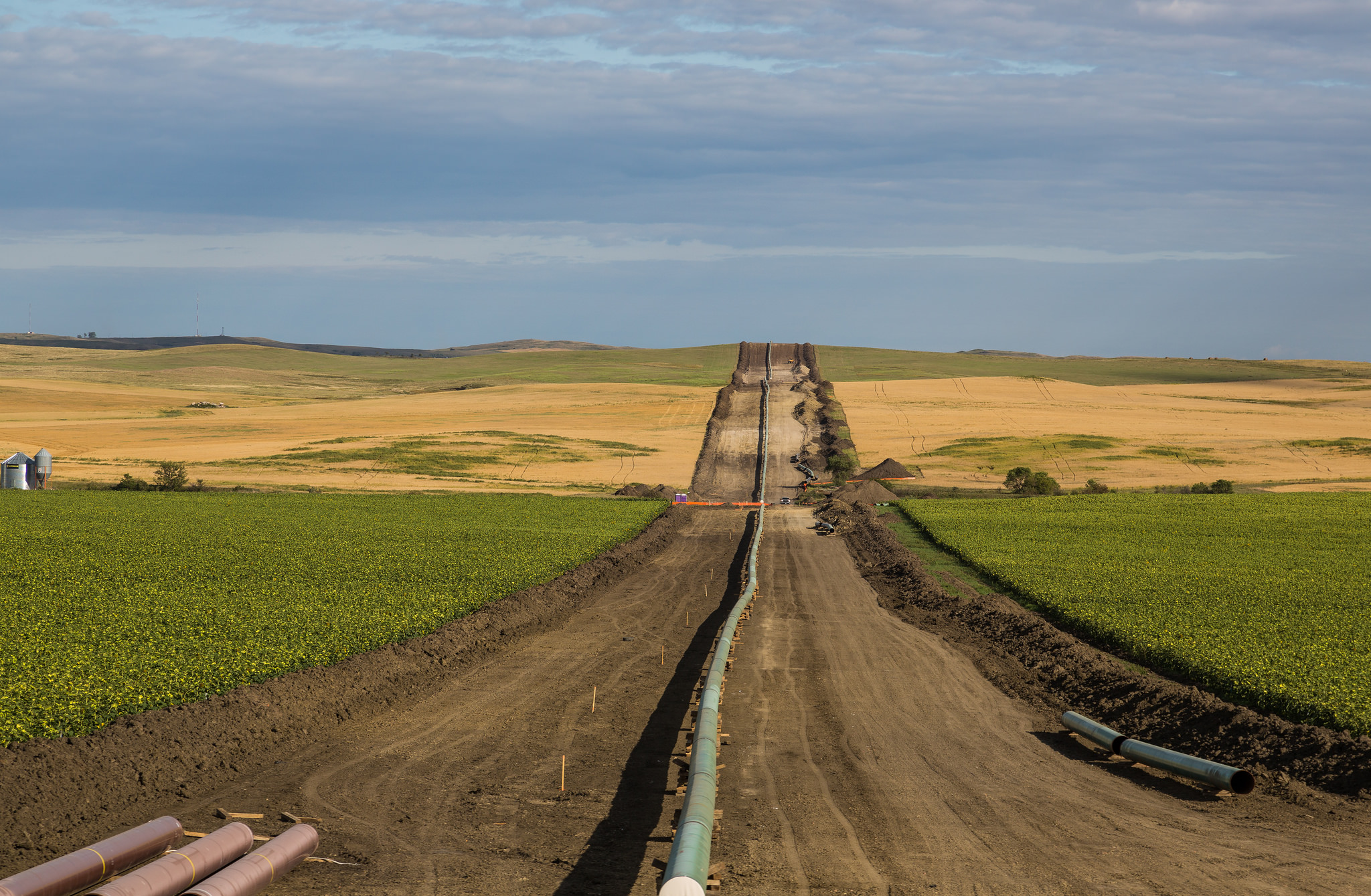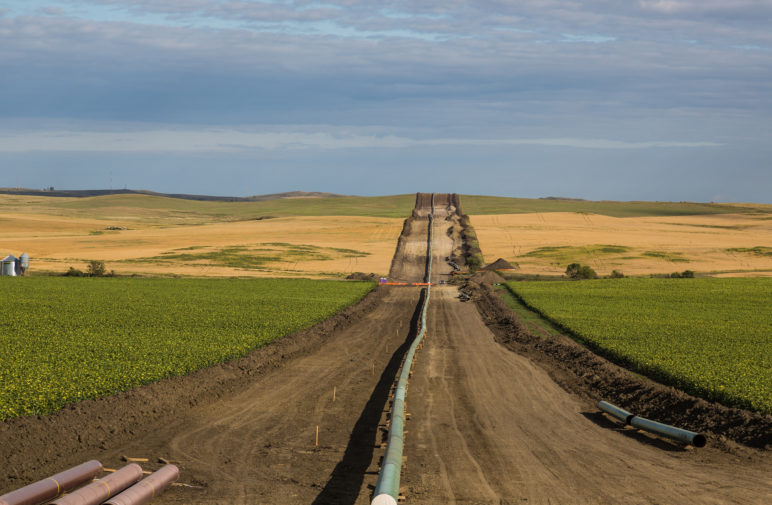Sightline Institute this week co-published a report noting weaknesses in the financing behind the Dakota Access Pipeline (DAPL) and questions around the long-term usefulness of the project.
The report—The High-Risk Financing Behind the Dakota Access Pipeline: A Potential Stranded Asset in the Bakken Region of North Dakota—describes how the company behind the pipeline is under extreme financial pressure to complete the project and how the pipeline is at risk of becoming a stranded asset in the region’s overbuilt oil-transport infrastructure.
While the Dakota Access Pipeline has gained notoriety for questions it raises about tribal sovereignty and its impact on drinking water, we’ve found serious, less-publicized problems around the finances and economics of the project.
“While the Dakota Access Pipeline has gained notoriety for questions it raises about tribal sovereignty and its impact on drinking water, we’ve found serious, less-publicized problems around the finances and economics of the project,” said Cathy Kunkel, an energy analyst with the New York-based Institute for Energy Economics and Financial Analysis and lead author of the report. The report notes that the project faces a January 1 completion deadline that it cannot meet, a failure that would trigger a potential reset with producers and shippers who can renegotiate contracts signed two years ago with the developer, Energy Transfer Partners (ETP).
“Because the economic prospects for Bakken oil producers have dimmed dramatically since early 2014, oil shippers—in the interest of protecting their investors and shareholders—may attempt to renegotiate terms when ETP misses its January 1 deadline, seeking concessions on contracted volumes, prices, or contract duration,” the report states.
Clark Williams-Derry, co-author of the report and director of energy finance for the Sightline, said the Dakota Access Pipeline stands to fall victim to global oil markets, where prices have collapsed over the past two years.
“If oil prices remain low and Bakken oil production continues to collapse, DAPL’s capacity will quickly become superfluous,” Williams-Derry said. “The Bakken oil industry has already over-invested in infrastructure for moving oil, and the Dakota Access Pipeline could simply add to the glut.”
“Oil markets have changed radically since ETP first locked in its contracts,” Williams-Derry said. “Shippers have to be asking themselves if the contracts they signed in early 2014 still make sense. ETP boxed itself in with the January 1 deadline.”
Williams-Derry said ETP’s contract predicament may explain some of the urgency in ETP’s push to complete the project, which is more than 80 percent done, against the tribal opposition of the Standing Rock Sioux.
“The Standing Rock Sioux may now be caught simply in the crossfire of a business dispute,” he said.
If oil prices remain low and Bakken oil production continues to collapse, DAPL’s capacity will quickly become superfluous.
Kunkel said that if oil prices remain low, as projected, Bakken oil production will continue to decline. “Existing pipeline and refinery capacity in the Bakken will be more than adequate to handle the region’s oil production,” Kunkel said. “The Dakota Access Pipeline could well become a stranded asset—one that was rushed to completion largely to protect favorable contract terms negotiated in 2014.”
Producers or shippers that have signed Dakota Access contracts include Phillips 66, Hess, Tesoro, and Oasis Midstream. The report notes that oil prices from January 2015 through September 2016 have averaged $45 per barrel, less than half the average price of $96 per barrel in 2013-2014.
Excerpts from the report:
- If Bakken production continues its slump—a near inevitability at today’s oil prices—the region will produce less than 800,000 bpd by the end of 2017. At that point, existing pipelines and refineries could handle the region’s entire oil output, even without the addition of DAPL—while leaving every single oil-by-rail facility completely idle.
- Most of the shipping contracts for DAPL were signed when the outlook for Bakken production was far more positive than it is today, and before low oil prices had caused serious financial harm to oil and natural gas producers.
- The rush to build the controversial Dakota Access Pipeline stems largely from the financial motivations of Energy Transfer Partners, motivations that do not necessarily coincide with the interests of Bakken oil drillers or with any economic rationale for increased regional pipeline capacity.
- The contracts for DAPL were signed in a radically different economic environment in which Bakken oil production was growing and drilling companies were doing well financially. The DAPL is a superfluous project being built to preserve the favorable contract terms that its developers negotiated in 2014.












Stacey Smith
please inform regarding ETP contracts with China. if oil were to flow through DAPL, how much would be refined and sent to China? this has been a claim circulated online.
Ericka
Yeah, I’d also like to know how much of the oil is proposed for export to Asia? Do you know?
Clark Williams-Derry
Unfortunately, I don’t know much about ETP’s sales contracts. DAPL ties into the
Energy Transfer Crude Oil Pipeline, which will deliver oil to from Patoka, Illinois to a Sunoco in Nederland, TX. From there, it can be shipped pretty much anywhere, either as crude oil or as refined product.